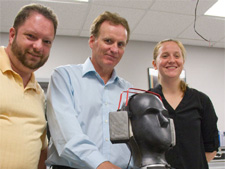It’s the time of year for saving money!
I’ve heard or read a zillion times the maxim, “Everybody hears differently.” I’ve heard it while chatting with enthusiasts and manufacturers at audio shows. I’ve read it on audio forums and in the online comments after audio reviews, usually slung to cast doubt on someone else’s judgment about an audio technology or product. I’ve even said somewhat similar (although much more factually supported) things myself, especially in an article titled “5 Reasons Why Headphones Can Sound Different to Different People.” But a recent research project, conducted by one of the most respected teams of scientists in the audio biz, suggests that maybe we don’t hear things all that differently — and that maybe we can make some universal judgments about audio gear.
 The project is summed up in a paper titled “The Influence of Listeners’ Experience, Age and Culture on Headphone Sound Quality Preferences,” by Sean Olive, Todd Welti and Elisabeth McMullin, all researchers currently working at Harman International. (Left to right, that’s Welti, Olive and McMullin in the picture.) For this project, the team had a wide variety of listeners assess the sound quality of four different headphones:
The project is summed up in a paper titled “The Influence of Listeners’ Experience, Age and Culture on Headphone Sound Quality Preferences,” by Sean Olive, Todd Welti and Elisabeth McMullin, all researchers currently working at Harman International. (Left to right, that’s Welti, Olive and McMullin in the picture.) For this project, the team had a wide variety of listeners assess the sound quality of four different headphones:
1) Headphone EQ’ed with the Harman Target Curve the team developed through its research
2) Sennheiser HD800 ($1,499)
3) Audeze LCD-2 ($995)
4) Beats by Dre Studio ($299)
The test subjects included trained and untrained listeners; listeners in Canada, China, Germany and the United States; and listeners ranging from under 25 to over 55 years old.
OK, so we all know the poor Beats Studio was thrown in to give the listeners a headphone that sounds radically different from and clearly inferior to the others. This is a common technique in multiproduct comparisons to make the listeners more comfortable with their judgments. If you can hear one right away that you don’t like, you’re a lot more comfortable with the test and more confident in your assessments. After throwing out the Beats Studio, though, it’d be reasonable to expect that listeners’ judgments of the headphones would vary. The Audeze and Sennheiser models are well-regaded audiophile headphones, and the Harman Curve model uses a response curve derived through what is surely the most extensive research program ever conducted into headphone sound.
But no: With few exceptions, the listeners tended to rank the headphones in the same order no matter their age, country of residence or listening experience.
Here are two of the group’s three key conclusions:
1) “Listeners generally preferred the same headphones regardless of their listening experience, country of residence, or age.”
2) “The more preferred headphones tended to have a measured response that was smoother, more extended in bandwidth and had a bass lift to simulate an accurate loudspeaker calibrated in a listening room.”
There were a few variances worth noting. The quality rankings weren’t as consistent among untrained listeners as they were among trained listeners. Listeners over 55 ranked the overall 2nd-place headphone slightly higher than the overall 1st-place headphone. But as you go through the charts presented on the free PDF of the presentation (available on this page), it’s remarkable how consistent the results were.
(Being scientists, the group didn’t want to slag any particular brand, so they didn’t say how the headphones ranked. But they did present the frequency response measurements of the headphones, and judging from my own measurements it looks like the Harman Curve headphone won, followed by the Sennheiser, the Audeze and the Beats.)
Of course, this is just one study employing four headphones and three pieces of music, so it doesn’t prove anything. But it does cast doubt on the idea that all judgments about audio are completely subjective.





